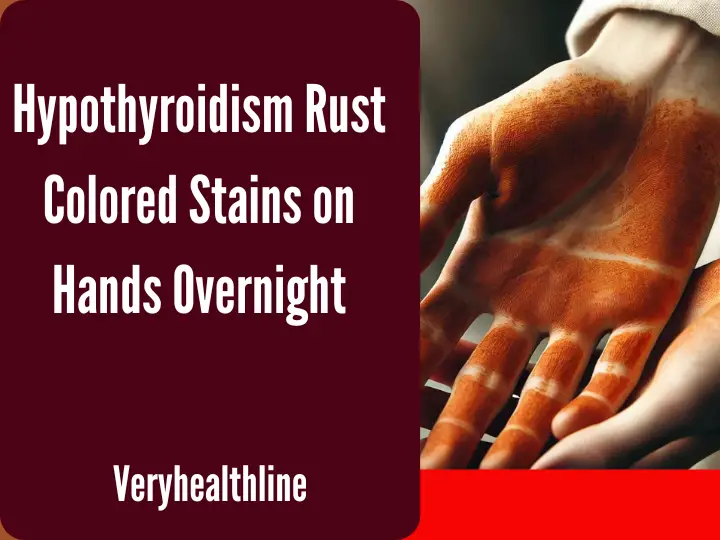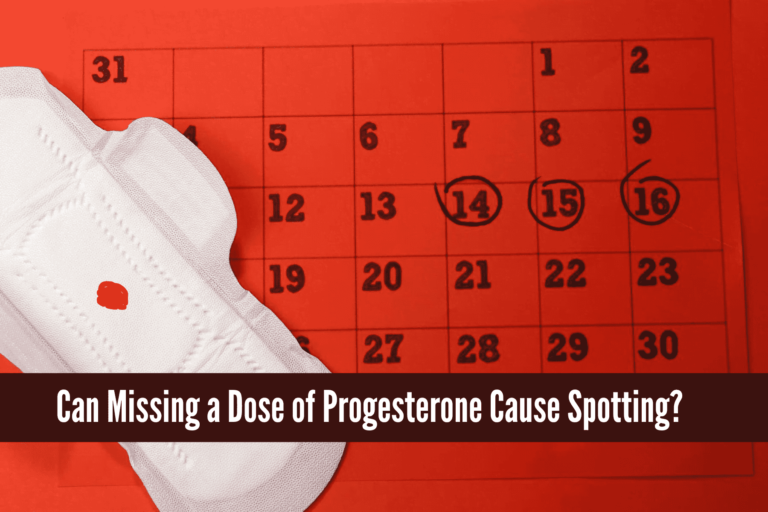Shocking Link: Hypothyroidism Causes Rust-Colored Hand Stains Overnight

Hypothyroidism is a medical condition where the thyroid gland becomes underactive, producing fewer hormones than the body needs. This endocrine disorder is most commonly caused by Hashimoto’s disease or thyroiditis, leading to a wide range of symptoms like fatigue, weight gain, and depression. In some cases, people may notice rust-colored stains or rusty marks on their hands overnight, which may seem surprising.
These skin manifestations could be due to changes in the skin’s texture or moisture levels, as hypothyroidism can affect the skin, making it dry or flaky. This article reviews the possible connection between dermatological problems and hypothyroidism and explores the diagnostic procedures for identifying the condition. Early management is key, as treatment options can help address both the internal and skin-related issues associated with this common disorder.
What is the Hypothyroidism?
Hypothyroidism is a condition where the thyroid gland does not produce enough hormones, which are crucial for regulating the body’s metabolism. When these hormone levels are low in the bloodstream, it can lead to issues such as fatigue, weight gain, and even numbness or tingling in the hands and fingers.
In some cases, people may develop carpal tunnel syndrome due to the compression of the median nerve in the wrist, which can increase discomfort.
A blood test is typically performed by a healthcare provider to confirm the condition. If left untreated, hypothyroidism can become a serious, even life-threatening problem. However, the good news is that it is a highly treatable condition. With the right medication and support from an endocrinologist, most people can manage their symptoms effectively and avoid complications over extended periods of time.
How hypothyroidism affects the hands
Hypothyroidism can affect the hands in several ways, depending on the severity and extent of the condition. As the body’s metabolism slows down, it impacts chemical reactions in the cells, which can lead to noticeable symptoms in the hands and fingers.
Many people experience coldness, numbness, or tingling, and in more severe cases, carpal tunnel syndrome may develop due to pressure on the nerves.
The skin on the hands can become dry, with flaking, scaling, and brittle nails showing white ridges or splitting. Additionally, stiffness, tenderness, or swelling in the joints and muscles can make daily activities more difficult. Fingernails may show slow growth, becoming weak over time, further affecting the functioning of the hands in everyday life.
Symptoms of hypothyroidism
Hypothyroidism is a slow-developing condition where the thyroid is underactive, leading to a shortage of hormones that regulate the body’s metabolism. This can cause subtle symptoms that worsen over time. Many people experience extreme tiredness, unexpected weight gain, and cold intolerance. Dry skin, thinning hair, and painful joints or muscles are also common.
Other symptoms include brain fog, forgetfulness, and difficulty concentrating, often leading to anxiety. Menstrual periods can become irregular, and fertility may be affected. In some cases, people notice numbness or tingling in their hands, face, or experience muscle weakness. Without proper treatment, these symptoms can worsen, leading to elevated cholesterol levels and other health problems.
Rust-Colored Stains on Hands
What Causes Rust-Colored Stains?
Rust-colored stains on the hands are rare and could be caused by several factors, ranging from metals in the blood to skin conditions. They are not widely recognized as a standard symptom of hypothyroidism but have been reported by some patients.
Are These Stains Linked to Hypothyroidism?
Although there is no direct scientific evidence linking hypothyroidism to rust-colored stains, thyroid dysfunction can lead to skin changes, including discoloration, due to hormonal imbalances.
Hypothyroidism and Skin Changes
How Hypothyroidism Affects Skin
One of the common symptoms of hypothyroidism is dry, flaky skin. As the condition progresses, other skin issues such as discoloration may also appear.
Connection Between Thyroid Function and Skin Issues
Thyroid hormones help regulate skin cell turnover, so when levels are low, the skin can become rough, dry, and more prone to irritation. This might explain why some people notice discoloration on their hands.
Iron and Hemochromatosis: Potential Links
Iron Overload as a Cause
Rust-colored stains could also be related to high levels of iron in the blood. This condition, known as hemochromatosis, causes iron to accumulate in various parts of the body, leading to skin discoloration.
What is Hemochromatosis?
Hemochromatosis is a genetic disorder where the body absorbs too much iron, which can deposit in tissues and organs, including the skin, causing a rust-like pigmentation.
Copper Deposits: Another Possible Cause
Copper in the Bloodstream
Like iron, copper is another metal that can accumulate in the body. If there is an imbalance, it may cause skin pigmentation changes, including the appearance of stains.
How Copper Affects Skin Pigmentation
When copper levels are too high, they may cause a subtle discoloration in the skin. This could also explain the occurrence of rust-colored stains on the hands.
How to Diagnose Hypothyroidism
Symptoms Review
If you suspect hypothyroidism, a thorough review of symptoms is the first step. Fatigue, cold sensitivity, and changes in skin texture can be key indicators.
Medical Tests for Hypothyroidism
Blood tests are essential to confirm hypothyroidism. These typically measure levels of TSH (Thyroid Stimulating Hormone), T3, and T4.
Treating Hypothyroidism
Thyroid Hormone Replacement Therapy
The most common treatment for hypothyroidism is hormone replacement therapy, where synthetic thyroid hormones are used to bring levels back to normal.
Lifestyle Changes and Diet
In addition to medication, a balanced diet rich in iodine and selenium can support thyroid health.
Other Possible Causes of Skin Discoloration
Liver Disease
Liver issues can also cause changes in skin color, including yellowing or discoloration similar to rust-colored stains.
Environmental Factors
External factors, such as exposure to certain chemicals, could also lead to discoloration of the skin.
When to Seek Medical Advice
Warning Signs
If the stains persist or are accompanied by other symptoms like fatigue or weight gain, it’s important to consult a healthcare professional.
Tests and Treatment
Medical tests can help rule out other conditions such as liver disease or hemochromatosis, ensuring proper treatment.
Prevention Strategies
Managing Hypothyroidism to Prevent Skin Issues
Consistently managing hypothyroidism with medication and a healthy diet can help prevent some skin-related issues.
Dietary Supplements and Their Impact
Supplements like iodine and selenium can play a key role in maintaining thyroid health and preventing further skin complications.
Conclusion
While hypothyroidism is known for causing a range of symptoms, rust-colored stains on the hands can be an unusual and concerning experience for some. While there is no definitive link between these stains and hypothyroidism, other conditions like hemochromatosis or metal deposits in the bloodstream could be at play. It’s important to consult a healthcare provider to identify the root cause and receive appropriate treatment.
FAQs
Can hypothyroidism cause skin discoloration?
Yes, hypothyroidism can cause dry, flaky skin, and in some cases, discoloration may occur due to hormonal imbalances.
What are rust-colored stains on hands?
These stains could result from a variety of factors, including iron or copper buildup in the body or exposure to certain chemicals.
How is hypothyroidism diagnosed?
Diagnosis typically involves a blood test to measure thyroid hormone levels, including T3, T4, and TSH.
Can diet impact hypothyroidism symptoms?
Yes, a balanced diet with sufficient iodine and selenium can help support thyroid function and reduce symptoms.
When should I see a doctor for rust-colored stains?
If the stains persist or are accompanied by other symptoms like fatigue, it’s essential to consult a healthcare provider.





